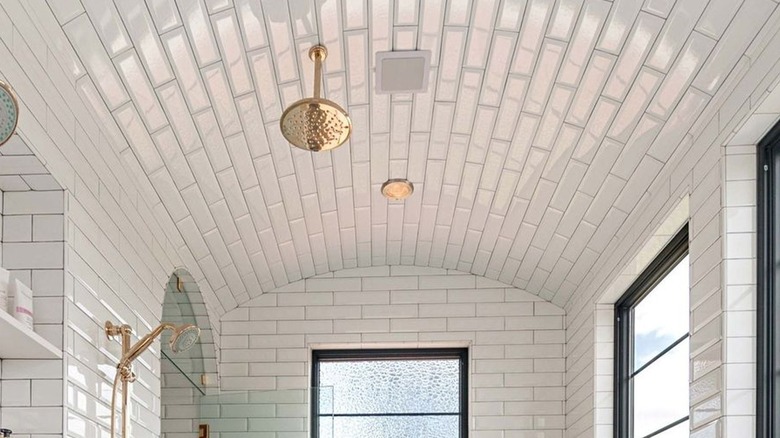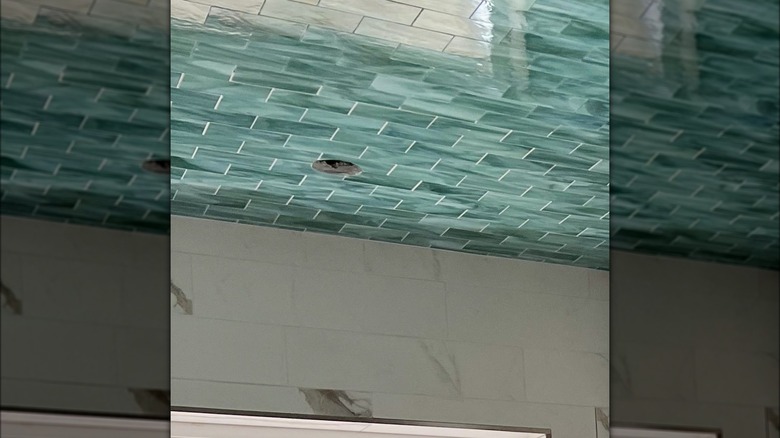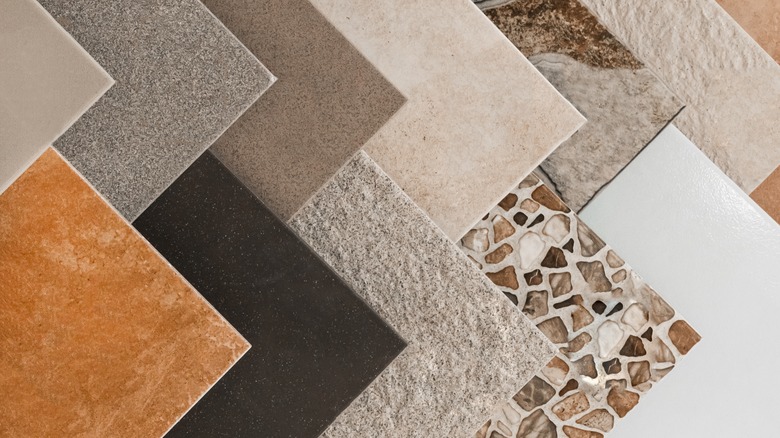Should You Tile Your Bathroom Ceiling? HGTV's Emily Henderson Weighs In
Using tile is one of the best ways to make a statement in your bathroom, allowing you to infuse some color, pattern, and shape. Many homeowners have installed tile in their shower floors and walls, but if you're really looking to make a statement, consider carrying the tile up to the ceiling to create a stunning visual element in a bathroom. Interior designer Emily Henderson agrees. "So sick," Henderson writes on her website Style By Emily Henderson of a bathroom with an arched and tiled ceiling. "By arching ceiling, tiling over it, and bringing the mirror up to the arch — it creates this incredible sense of space." The combination of these three elements does help the bathroom appear larger and grander, and the tiled ceiling is one of the most unexpected details of the room.
So, is it worth it to tile your bathroom ceiling? Most designers would probably agree that it creates stunning detail and is a great way to feature the height of the room or interesting ceilings. However, tiling the ceiling is more expensive. "I proposed tiling our ceiling in our bathroom and they quoted an additional $5k in just tile labor to do it, so we opted out," Henderson explains. "[A]nything done on the ceiling takes a lot longer and therefore is a lot more expensive in labor costs." Tile on the ceilings is a stylish statement, but that comes at a cost.
Tiling a bathroom ceiling
Emily Henderson loves how a tiled ceiling makes a bathroom look high-end, but it's not a project you can just jump right into. Before installing the tile, you should take a look at your ceiling. While you can install tile on a flat ceiling, it's better if it has a slope. The slope allows for water and moisture to run down the walls rather than dripping from the ceiling. Flat ceilings may develop brown spots from water droplets leaving traces of minerals behind. These can be wiped off and cleaned, but this additional cleaning can be an inconvenience.
A sloped ceiling is particularly important for the shower, where moisture is the highest. In fact, the Tile Council of North America calls for a completely enclosed steam shower to be sloped at least 2 inches per foot.
Tiling a ceiling can also be a big undertaking when it comes to renovation. You may have to redo the ceiling to get it in the proper condition to have the tile installed. The ceiling may require materials other than standard drywall or plaster to make it waterproof and provide proper support. Because of the specialized installation, this is a project that a professional should tackle.
Choosing tile for the ceiling
There are plenty of options available for tiling a bathroom ceiling, but you want to choose a tile that's waterproof and durable yet also lightweight for installation. Common materials like porcelain, ceramic, glass, and natural stone are all popular shower tile options. Quarry, which is made with clay, shale, and other natural materials, is another common choice for tiles. Ceramic and porcelain are by far the most durable while still being cost-effective.
Similarly, consider the size of the tile during the selection process. Larger tiles can help make a space appear bigger, while smaller tiles create a busier pattern. The tiles can also help highlight the height and width of the room to make the ceiling look taller or the room look wider, respectively.
As for colors, you have more limitless options. Carrying the color from the floor onto the ceiling is a popular option as it creates the appearance of a larger space. With this, it's often best to keep the same tile so it looks seamless. You can also make the ceiling contrast with the rest of the bathroom by choosing different colors, shapes, or sizes of tiles for the walls and ceiling. You could even tile only the ceiling and not the walls or opt for a half-tiled design where you carry the tile on only part of the ceiling or on the top half of the walls plus the ceiling.


